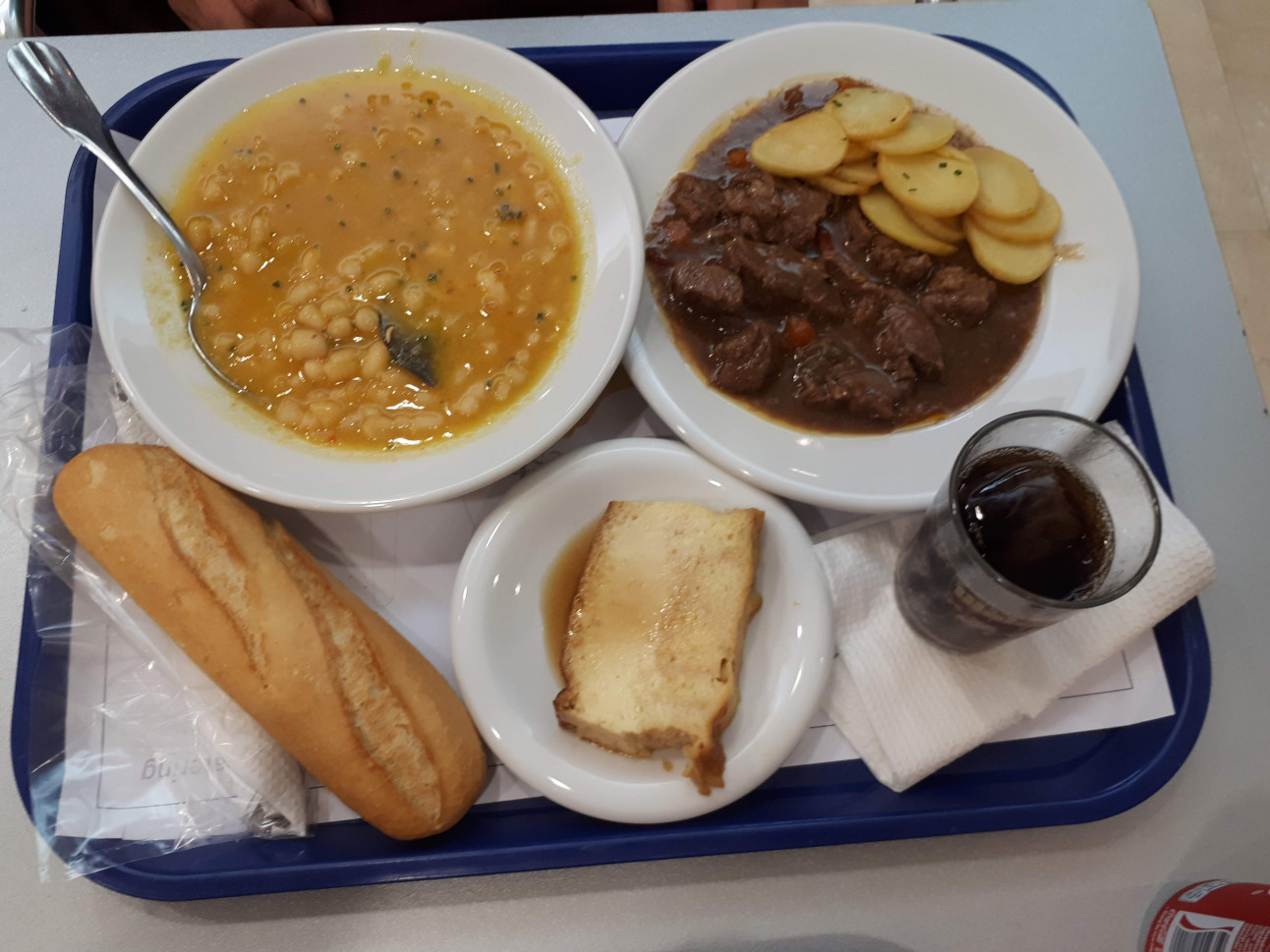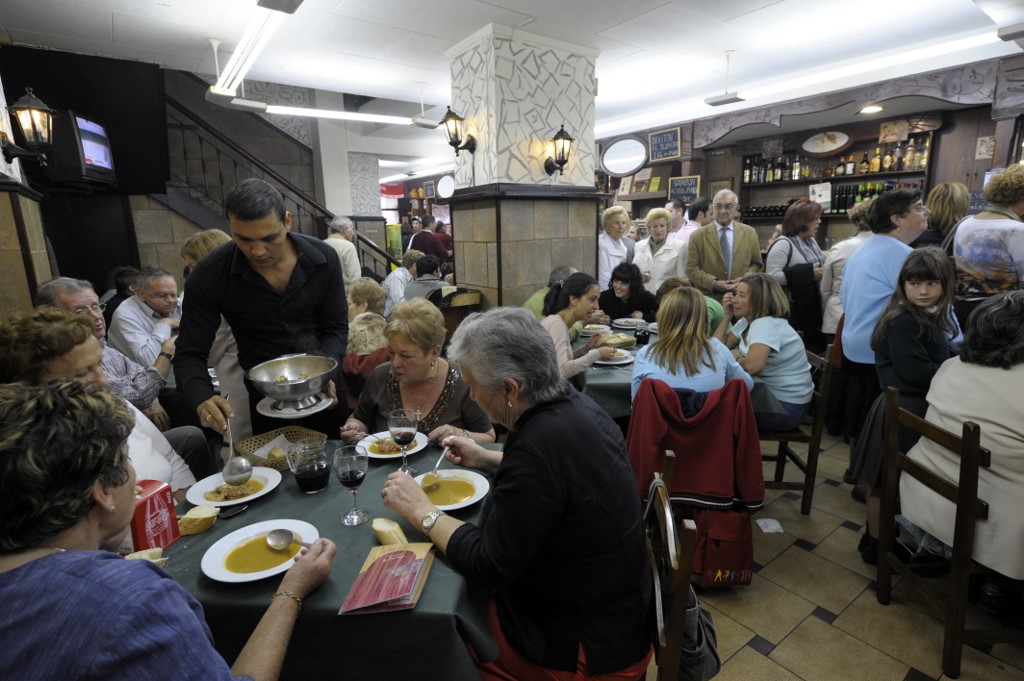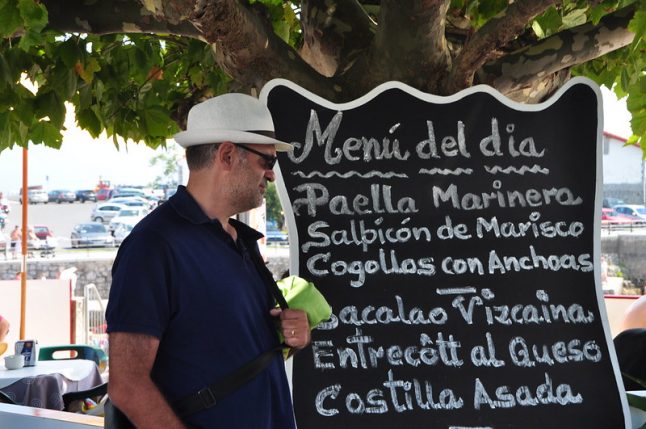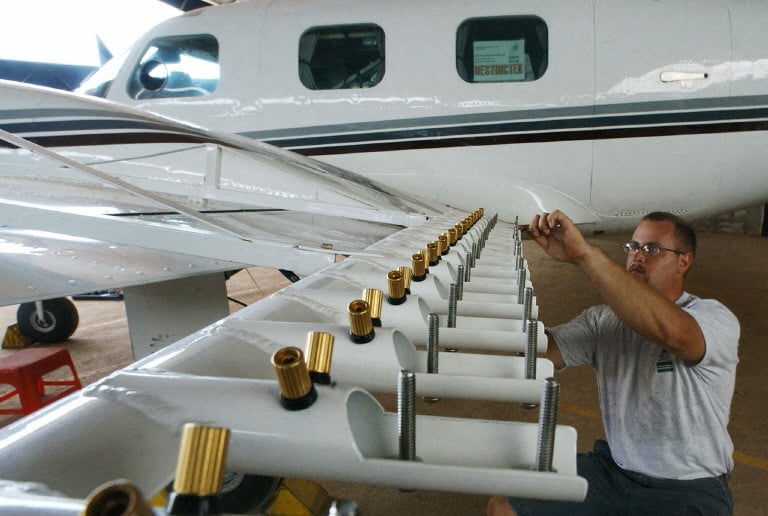Wander up and down any street in Spain and you’re bound to see a blackboard propped up outside almost any restaurant announcing ‘Menú del Día‘.
A list of two courses with various dishes for each will have been hastily scribbled down by the chef that morning. And no menú would be complete without the final flourish of, ‘Pan, Bebida Postre o Cafe‘ (Bread, Drink and Dessert or Coffee) followed by an appetite-inducing and implausibly reasonable price.
There is a catch of course. El menú del día is only available from Monday to Friday and as the name suggests only at lunchtimes, normally 2 – 4pm. You’ll also have a fairly limited two or three options for each course. Hence the incredibly good value. I’ve eaten fixed-price menus in Spain for as little as €7. They can be as ‘expensive’ as €15 at more high-end establishments. But the average is around €12.
So how did this fantastic value lunch menu come about and why is it so popular today?

A maincourse of swordfish and potato at Madrid’s El Maño restaurant. Photo: F Govan
By the late 1950s Franco realised just how much Spain had to gain economically from tourism. The ‘Spain is different’ marketing campaign of the late 1950s saw an enormous boom in tourism from 2.9 million visitors in 1959 to 11.1 million visitors in 1965.
General Franco’s Minister of Information and Tourism, Manuel Fraga subsequently decided to introduce legislation to implement a standardised format for a fixed-price menu to make sure all visitors could enjoy Spanish cuisine.
Originally it was called El Menú Túristico and was aimed specifically at tourists. El Menú Túristico was made law in Spain on March 17th, 1965 and an official state bulletin from the 29th March 1965 described in excruciating detail what was to be provided by all restaurant owners.
READ ALSO:
- 18 ways your eating and drinking habits change when you live in Spain
- The stats that explain Spain’s love affair with tapas
- The one speciality dish you need to try from each of Spain’s regions
Accompanying legislation also laid down the law regarding the management of cafeterias, university and factory canteens, as well as restaurant and café cars on trains.
It was inevitable then that the economical fixed-price menú became incredibly popular with Spaniards, and soon spread right across the country. By the early to mid 1970s el menú túristico had become el menú del día and was available in every single town and city in Spain, as it is today.
Yes, el menú del día is a culinary institution in Spain – culinary may sound a little pretentious, as el menú is anything but. Think basic and hearty.
So what’s the format?

A typical menú del día of starter, main course, dessert, bread and a drink. Photo: F Govan
The menu includes three courses; ‘primer plato’, ‘segundo plato’ and ‘postre’. First and second courses plus dessert. You’ll also be brought an often generous basket of bread.
So what can you expect to eat? For the first course you’ll be given between two to four dishes from which to choose, usually based on vegetables, eggs or pulses.
The offerings will vary depending on the time of year, as Spaniards love to use fresh seasonal produce. In colder months, think soups, stews or paella.
When the heat kicks-in salmorejo and gazpacho (cold tomato soups of varying viscosity) are common choices along with salads. Meat and fish dishes are mainstays of the second course, often grilled, sometimes fried. You might be lucky enough to find seafood, calamari or prawns on offer too.
And for dessert? Well, they rarely come as a surprise.
Expect a stream of egg-custard style desserts, like natillas, flan or pudding. Arroz con leche is nearly always on the menú too – creamy rice pudding. Personally, I find these options too heavy after eating two substantial courses. So you can always opt for fruit, which will literally be an orange or an apple which you will need to peel yourself!
‘Un surtido de helados’ – a selection of ice creams is also standard. But why do they only ever have vanilla!? If you get really lucky there might be Tarta de Santiago which is a delicious almond-flavoured cake from Galicia.
Will el menú del día be around forever?

Photo: AFP
Well, it is no longer the law to provide one. Yet, so ingrained has el menú become in the daily rhythm of life it’s hard to imagine it disappearing. It’s true that gentrification, and the closure of family businesses due to retirement are taking their toll on the bargain menu.





 Please whitelist us to continue reading.
Please whitelist us to continue reading.
Member comments